|
Books Should Be Free Loyal Books Free Public Domain Audiobooks & eBook Downloads |
|
|
Books Should Be Free Loyal Books Free Public Domain Audiobooks & eBook Downloads |
|
Top Authors |
|---|
|
Book type:
Sort by:
|
By: Alberto Santos-Dumont (1873-1932) | |
|---|---|
 My Airships: The Story of My Life
My Airships: The Story of My Life
The delightful tale of "le petit Santos" as he dances through the sky above the City of Light at the dawn of the aerial age.A note to the listener: Throughout this story the author makes several references to helpful figures and illustrations. These may be found upon the corresponding pages in the Project Gutenberg e-book. | |
By: Albertus Magnus (1193-1280) | |
|---|---|
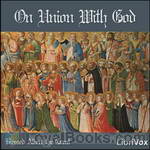 On Union With God
On Union With God
Surely the most deeply-rooted need of the human soul, its purest aspiration, is for the closest possible union with God. As one turns over the pages of this little work, written by Blessed Albert the Great towards the end of his life, when that great soul had ripened and matured, one feels that here indeed is the ideal of one's hopes. (From the Preface) | |
By: Albion Fellows Bacon (1865-1933) | |
|---|---|
 Songs Ysame
Songs Ysame
This is a volume of poetry written by the sisters Albion Fellows Bacon and Annie Fellows Johnston. Both of the sisters reached quite a level of fame in their own right, Ms Bacon primarily as a social reformer and Ms Johnston as an author of children's books. In this volume of poetry, they bring their two sets of skills together to write beautiful verses. - Summary by Carolin | |
By: Aldous Huxley (1894-1963) | |
|---|---|
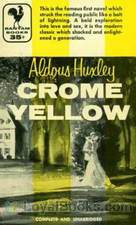 Crome Yellow
Crome Yellow
A shy, introverted young poet. A weekend in a magnificent English country house. A beautiful young lady whom the poet is secretly in love with. An assorted group of guests with varied interests, motives, ambitions and aspirations, and the complex web of history and events that connect all of them. Crome Yellow by Aldous Huxley was his first book, published in 1921, when he was just 27 years old. It is typical of many books written during this period by writers like Thomas Love Peacock and Somerset Maugham, centered round a country mansion and the quaint, British tradition of being invited to spend a weekend with a group of people whom one may or may not know... | |
 Defeat of Youth and Other Poems
Defeat of Youth and Other Poems
Though later known for his essays and novels, Aldous Huxley started his writing career as a poet. Published in 1918, The Defeat of Youth and Other Poems is his third compilation of poetry. The volume begins with "The Defeat of Youth", a sequence of twenty-two sonnets that explores irreconcilability of the ideal and the disappointing reality. Jerome Meckier called it “the century’s most successful sonnet sequence, better than Auden’s or Edna St. Vincent Millay’s.” In the rest of the volume, Huxley continues to explore themes started in The Burning Wheel, his first volume of poetry, including vision, blindness, and other contrasts... | |
 Mortal Coils
Mortal Coils
Aldous Huxley is best known as a philosopher and novelist – notably as the author of Brave New World. He also wrote poetry, short stories and critical essays. Most of his work is somewhat dark and mildly sardonic, partly because he came of age just after World War I, when all of Europe was in a state of cultural, political and social confusion. His novel, Crome Yellow, is a prime example. Mortal Coils includes four short stories and a play, including one of the author’s most famous short works: "The Gioconda Smile." - Summary by Kirsten Wever | |
 Wheels - The Fourth Cycle
Wheels - The Fourth Cycle
A series of six volumes of Wheels anthologies was produced by members of the Sitwell family between 1916 and 1922. The fourth volume, published in 1919, contains several notable poems by the recently deceased Wilfred Owen. The other poets represented are Francisco Quevedo, Aldous Huxley, Arnold James, Iris Tree, Sherard Vines, and Edith, Osbert and Sacheverell Sitwell. - Summary by Algy Pug | |
 Wheels - The Fifth Cycle
Wheels - The Fifth Cycle
The Fifth Cycle of the Wheels poetry anthology was published in 1920 and contains poems by Aldous Huxley, Alan Porter, Leah McTavish Coehn, Geoffrey Cookson, William Kean Seymour, John J. Adams, Sherard Vines, and Osbert, Edith and Sacheverell Sitwell. The book was dedicated to Mrs Arnold Bennett, who is described as “poetry’s greatest interpretative artist.” - Summary by Algy Pug | |
 Wheels - The Second Cycle
Wheels - The Second Cycle
A series of six volumes of Wheels anthologies was produced by members of the Sitwell family between 1916 and 1922. The second volume, published in 1917, contains poems by the Sitwells and also Aldous Huxley, among others. - Summary by Algy Pug | |
 Antic Hay
Antic Hay
The epigram to this work from Christoher Marlowe applies to the plot of this story: "My men like satyrs grazing on the lawns / Shall with their goat-feet dance the antic hay." The plot follows Huxley and his cohorts in a search for meaning and hope and love in post WWI London. | |
 Limbo
Limbo
This is Aldous Huxley's first collection of short stories, which consists of 6 stories and a play. Characters in the play, "Happy Families", read by the following volunteers: Aston: ToddHW Aston's Dummy: James R. Hedrick Topsy: czandra Topsy's Dummy: czandra Sir Jasper: Marvin Larson Belle: Dawn Sutton Henrika: Rachel Costello Cain: Krista Zaleski Stage Direction: Krista Zaleski | |
 Crome Yellow, Version 2
Crome Yellow, Version 2
Fascinating and brilliant at many levels, Huxley's spoof of Lady Ottoline Morrell's famous bohemian gatherings is difficult to categorize. The ironic tone and caricaturish rendering of some characters makes it partly entertaining satire, but intertwined with the irony are a very human love story and much poignant social commentary. Denis Stone (Huxley himself) is a young poet hopelessly enamored of the languid Anne Wimbush, who comes to Priscilla Wimbush's Crome estate for several weeks of intellectual and artistic escape... | |
 Burning Wheel
Burning Wheel
Though Aldous Huxley is best known for his later novels and essays, he started his writing career as a poet. The Burning Wheel is his first work, a collection of thirty poems that pay homage in style to poets who wrote in the Romantic or the French symbolist styles. Many of the poems deal with themes of light, darkness, sight, music, art, war, and idealism vs. realism. Though the optimism in his early works waned as he became older, his characteristically optimistic and determined point of view shines through. The last poem was read collaboratively by ezwa, AlgyPug and Larry Wilson. | |
 Jonah
Jonah
Though Aldous Huxley gained popularity from his novels and essays, he started his writing career as a poet. Jonah, his second compilation of poetry, is a collection of twelve poems (four of which are written in French). He published it, at the age of 23, for Christmas in 1917. He stated his intention to stop writing poetry at the end of the volume, but actually went on to publish numerous compilations after Jonah. (Mary Kay) | |
 Leda
Leda
Though he gained recognition for his later essays and novels, Aldous Huxley started his writing career as a poet. Published in 1920, Leda is his fourth compilation of poetry. It begins with the passionate and slightly erotic poem "Leda", which recalls the love affair between Queen Leda, the mother of Helen of Troy, and her swan, Zeus in disguise. Some short poems follow. The book ends with two long sections. The first, "Beauty," is a short collection of vignettes where the author reflects on the concept of beauty through an ideal model of physical desire, Helen of Troy... | |
By: Alec John Dawson (1872-1951) | |
|---|---|
 Finn The Wolfhound
Finn The Wolfhound
Dawson published over thirty books, the one best remembered today probably being the animal adventure story Finn the Wolfhound (1908)…. His own dog Tynagh and her son Gareth, who was described as the largest and finest specimen of his breed to date, served as the models for Tara and Finn in Finn the Wolfhound (1908). This is probably Dawson’s best-remembered and certainly his most frequently reprinted work: Finn, a champion Irish Wolfhound, is taken from England to Australia where he undergoes a series of adventures, being exhibited as a wild animal in a circus and escaping to live in the outback before eventually finding his old master and saving his life. | |
 Somme Battle Stories
Somme Battle Stories
Stories of World War I warfare, published in 1916 in the midst of the war. (That's why names of persons and units are literally "blanked" out.) Alec John Dawson (1872 - 1951), generally known as A. J. Dawson (pseudonyms Major Dawson, Howard Kerr, Nicholas Freydon) was an English author, traveller and novelist. During World War I he attained the rank of Major, and was awarded the MBE and Croix de Guerre in recognition of his work as a military propagandist, a work the listener may want to keep in mind... | |
By: Aleister Crowley (1875-1947) | |
|---|---|
 Book of Lies
Book of Lies
The Book of Lies, or Liber 333, is a holy book in the Western occult tradition of Thelema, consisting of 91 short chapters of poems, aphorisms, rituals, and metaphysics. This recording is of the original 1913 publication, and thus omits the further commentaries added by Crowley for subsequent additions. Those familiar with Crowley’s hermetic writings will recognize his subversive and playful style. Beneath the layers of symbolism, contradiction, and blasphemy lies a biting critique of the puritanical social, political, and religious values of the author’s generation. | |
By: Aleksandr Kuprin (1870-1938) | |
|---|---|
 Slav Soul and Other Stories
Slav Soul and Other Stories
Novelist and short story writer Alexandr Ivanovich Kuprin was one of the most widely read authors of his time. Nabokov called him the Russian Kipling for his stories about people who are often "neurotic and vulnerable". Many films and radio programs based on his works have been produced. These 15 short stories, typically “artful studies of abnormal states of mind”, were selected from various sources. The collection includes “Easter Day” ; “The Picture” ; “Hamlet” ; “The Last Word” ; “Dogs' Happiness” ; “A Clump of Lilacs” ; “Anathema” ; and “Tempting Providence” ... | |
 Sasha
Sasha
Kuprin is well-known to Russian readers and has been described as one of the last exponents of Russian critical realism. He first made a career as an officer in the army, but he left this work to take on employment as varied as journalist, hunter, fisherman, actor, and circus worker. His literary fame was launched with the publication in 1905 of Poyedinok . Here are 12 short stories from Alexander Kuprin. - Summary by KevinS | |
By: Alessandro Manzoni (1785-1873) | |
|---|---|
 Betrothed (I Promessi Sposi)
Betrothed (I Promessi Sposi)
The Betrothed (I Promessi Sposi) presents a kaleidoscope of individual stories, which are all tied together by the story of Lucia and Renzo, two young persons of humble origin that are deeply in love with one another. However, despite their great attachment, they are prevented from marrying by the cruel Don Rodrigo, who has himself cast an eye on the beautiful and pious Lucia. Don Rodrigo menaces the priest who was to perform the wedding ceremony, who then refuses to do his duty. Thus threatened and prevented from being married, the couple is separated, and the narration follows each of them on their struggle to unite again... | |
By: Alexander Aaronsohn (1888-1948) | |
|---|---|
 With the Turks in Palestine
With the Turks in Palestine
While Belgium is bleeding and hoping, while Poland suffers and dreams of liberation, while Serbia is waiting for redemption, there is a little country the soul of which is torn to pieces—a little country that is so remote, so remote that her ardent sighs cannot be heard.It is the country of perpetual sacrifice, the country that saw Abraham build the altar upon which he was ready to immolate his only son, the country that Moses saw from a distance, stretching in beauty and loveliness,—a land of promise never to be attained,—the country that gave the world its symbols of soul and spirit... | |
By: Alexander Baltzly | |
|---|---|
 Is War Diminishing?
Is War Diminishing?
A study In the prevalence of war in Europe from 1400 to the present day. This small book summarises historical periods of peace compared to periods of war, as concluded by consultation with other historians, and seeks to answer the question as to if the incidence and duration of periods of national conflict were becoming more intense or not, and how the periods of war may correlate to other social trends. - Summary by Leon Harvey | |
By: Alexander Berkman (1870-1936) | |
|---|---|
 Bolshevik Myth
Bolshevik Myth
The Bolshevik Myth is a book by Alexander Berkman who with his partner Emma Goldman was deported from the USA under the 1918 Anarchist Exclusion Act and shipped to the young Soviet Russia. He describes his experiences in Bolshevik Russia from 1920 to 1922, where he saw the aftermath of the Russian Revolution of 1917. Written in the form of a diary, The Bolshevik Myth describes how Berkman's initial enthusiasm for the revolution faded as he became disillusioned with the Bolsheviks and their suppression of all political dissent... | |
By: Alexander Dunlop Lindsay (1879-1952) | |
|---|---|
 Philosophy of Immanuel Kant
Philosophy of Immanuel Kant
Born in Scotland, Alexander Dunlop Lindsay was a teacher of philosophy at a number of universities in England in the early 1900s. This brief commentary on Kant's philosophy is a work that focuses solely on some of the main ideas Kant put forth in the three Critiques. Although not comprehensive, the narrative style of this volume makes it a pleasant read and will be a valuable "break-in" point the complex philosophy of Immanuel Kant. | |
By: Alexander Forbes (1882-1965) | |
|---|---|
 Radio Gunner
Radio Gunner
Originally published anonymously in 1924, this intriguing work of science fiction, categorized by Bleiler under 'imaginary wars and inventions' . Alexander Forbes was a Harvard physiologist who contributed considerably to the fields of physiology and neuroscience in the 20th century. - Summary by E F Bleiler paraphrased | |
By: Alexander Hamilton (1755/1757-1804) | |
|---|---|
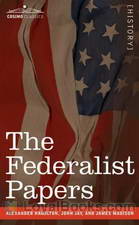 The Federalist Papers
The Federalist Papers
In order to promote the ratification of the United States Constitution in the late 1780s, Alexander Hamilton, James Madison and John Hay wrote a series of 85 articles and essays explaining their reasons to support the constitution. Most of these articles were published in The Independent Journal and The New York Packet and they later became known as “The Federalist Papers.” In reading the articles, one will encounter very interesting issues like Hamilton’s opposition to including the Bill of Rights in the Constitution and why he thinks a Union is better than a Confederation... | |
By: Alexander Hamilton Laidlaw (1869-1908) | |
|---|---|
 American Girl
American Girl
Alexander Hamilton Laidlaw was born in Scotland. He graduated from Philadelphia Central High School in 1845. He practiced medicine from 1856-1905 and published some works including Soldier Songs and Love Songs, 1898, from which our Fortnightly Poem is taken. | |
By: Alexander Herrmann (1844-1896) | |
|---|---|
 Herrmann's Book of Magic
Herrmann's Book of Magic
Black Art Fully Exposed. A complete and practical guide to drawing-room and stage magic for professionals and amateurs, including a complete exposure of the black art. | |
By: Alexander Kinglake | |
|---|---|
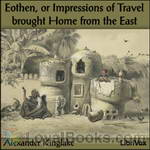 Eothen, or Impressions of Travel brought Home from the East
Eothen, or Impressions of Travel brought Home from the East
A classic of Victorian travel writing, Kinglake’s book describes his journey through the Ottoman empire to Cairo, and his residence there in time of plague. | |
By: Alexander Patterson | |
|---|---|
 Greater Life and Work of Christ
Greater Life and Work of Christ
It will be seen at a glance that this is not a life of Christ in the usual sense. It is not a review of the events of the earthly existence of our Lord. There is a greater life and a larger work of Christ of which his life on earth is but a single chapter. While no apology is needed for any publication of the great theme of the gospel, it may be stated that there is a special reason for such a book as this. The author has examined many works on Christ and lists of hundreds more, and has conferred with competent literary authorities, and has learned of few works, if any, covering this greater life and work of Christ... | |
By: Alexander Pope (1688-1744) | |
|---|---|
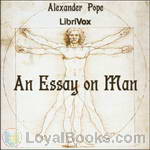 An Essay on Man
An Essay on Man
Pope’s Essay on Man, a masterpiece of concise summary in itself, can fairly be summed up as an optimistic enquiry into mankind’s place in the vast Chain of Being. Each of the poem’s four Epistles takes a different perspective, presenting Man in relation to the universe, as individual, in society and, finally, tracing his prospects for achieving the goal of happiness. In choosing stately rhyming couplets to explore his theme, Pope sometimes becomes obscure through compressing his language overmuch... | |